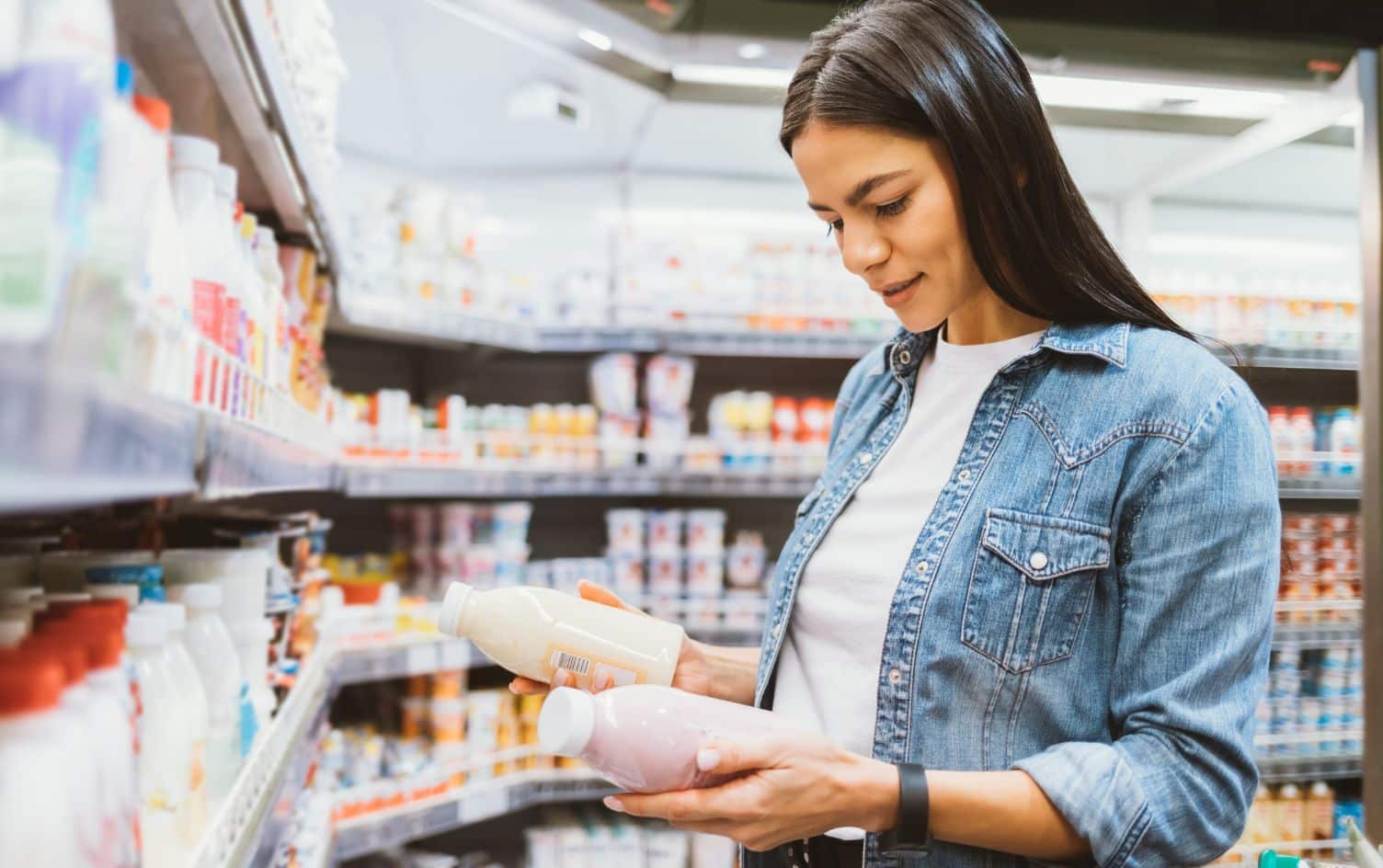Good nutrition sounds simple enough: Eat mostly foods that come from the ground, fill your plate with colorful fruits and vegetables and splurge only on occasion. But realistically, you probably find yourself confused when trying to decipher an ingredient list, or reading a label or packaging at the grocery store.
If you’re confused, you’re far from alone: Some data suggests half of the world’s population only partly understands nutritional labels on food. To some extent, the Food and Drug Administration (FDA) has made strides to help fix that, clarifying what’s truly in a food, adjusting what kinds of foods can be called ‘healthy’ on a label and ordering that new nutrition labels be more detailed in how they break down ingredients.
Still, dietitians say people tend to make the same mistakes over and over again when reading labels. Here, six common ones to avoid, plus how to pick the best food product for you:

In January 2020, the FDA will require added sugars (Think: syrups, honey and concentrated fruit or vegetable juices added to foods), be specified on food labels. “The new label will read ‘Total Sugars’ with a separate line underneath saying ‘Includes X grams of added sugars,’” explains Melissa Majumdar, RD, a senior bariatric dietitian for the Brigham and Women’s Center for Metabolic and Bariatric Surgery in Boston. Some companies have voluntarily made this change already but not every product has. “By overeating added sugars we increase our caloric intake without adding much in the way of health to our diet,” says Dana Hunnes, RD, PhD, a senior dietitian at Ronald Reagan UCLA Medical Center.
The fix: If you see an ‘added sugars’ line, pay attention. They could be listed as anhydrous dextrose, brown sugar, corn syrup, high-fructose corn syrup (HFCS), honey and other sugar synonyms. In general, it’s best to limit your intake of added sugars to no more than 25 grams for women a day (100 calories) and no more than 37.5 grams (150 calories) for men. Look out for foods like peanut butter, salad dressings and applesauce, which often contain added sugars, says Majumdar. “A general rule of thumb could be to think more about avoiding foods with sugar in the first three ingredients,” says Majumdar.

“All fats are not created equally,” says Majumdar, and by January 2020, nutrition facts labels will no longer even specify calories from fat, she notes. “This decision was made to encourage consumers to choose healthy fats.” After all, while a packaged energy bar and salmon both contain calories from fat, the latter contains omega-3 fats, which protect your heart, brain and provide anti-inflammatory effects.
The fix: Up until this distinction is removed from packaging, ignore it — but remember all fats do contain 9 calories per gram, so “any food containing fats will have a higher ‘calories from fat’ than other foods,” says Majumdar. That’s why it can be a good idea to track your macros.

We hate to say it but even labels that say they don’t include certain food additives actually indeed could. For example, the Nutrition Facts Label can state it has 0 grams trans fat so long as it packs less than 0.5g per serving. Considering it’s best to keep trans fats to less than 1% of your total daily calories (or about 2 grams if you’re eating 2,000 calories), falling for this one could lead you to overdo it. Typically, trans fats are found in coffee creamers, fast food, frozen pizzas and packaged desserts.
Moreover, foods that say they contain no nitrates or nitrites — preservatives in cured meats that have been linked to cancer — might also not be telling the whole story. Technically, the FDA allows meat that’s cured with celery powder or celery juice (ingredients that can actually produce nitrates naturally) to fly under the radar.
The fix: Cut back on processed meats, suggests Majumdar. Instead, add more plant-based proteins to your diet.

In reality, sugar-free cookies, for example, often still have at least 75% of the total carbohydrate as a regular cookie, says Hunnes, “and they’re never as tasty.”
The fix: A better bet would be to eat the real thing in moderation, being mindful of portion size, she says.

You might think this figure helps you see just how much of a particular nutrient you’re filling up on, but since this value is based on a calorie intake of 2,000 calories, it’s not always that useful, says Majumdar. “If you don’t eat 2,000 calories or if you don’t need 2,000 calories, this percent provides no bearing for you.”
The fix: Focus on how a certain food fits into a balanced meal and your diet, she suggests. Is it a whole grain, protein or fat source, for example? This can help you choose foods from different macro groups throughout the day.

“It is best to eat foods in their most natural states with easily recognizable ingredients,” says Hunnes. “Often, but not always, foods with labels contain many ingredients that may not be all that healthful.”
The fix: With single-ingredient, whole foods in their natural state, like apples or leafy greens, you know exactly what you’re getting. Try to shop the perimeter of the grocery store to stock up on more whole foods.
Originally published May 2019, updated October 2023
Ready to take the next step? Unlock MyFitnessPal Premium to access custom goal settings, quick-log recipes, and guided plans from a registered dietitian. Premium users are 65% more likely to reach their weight loss goals!




